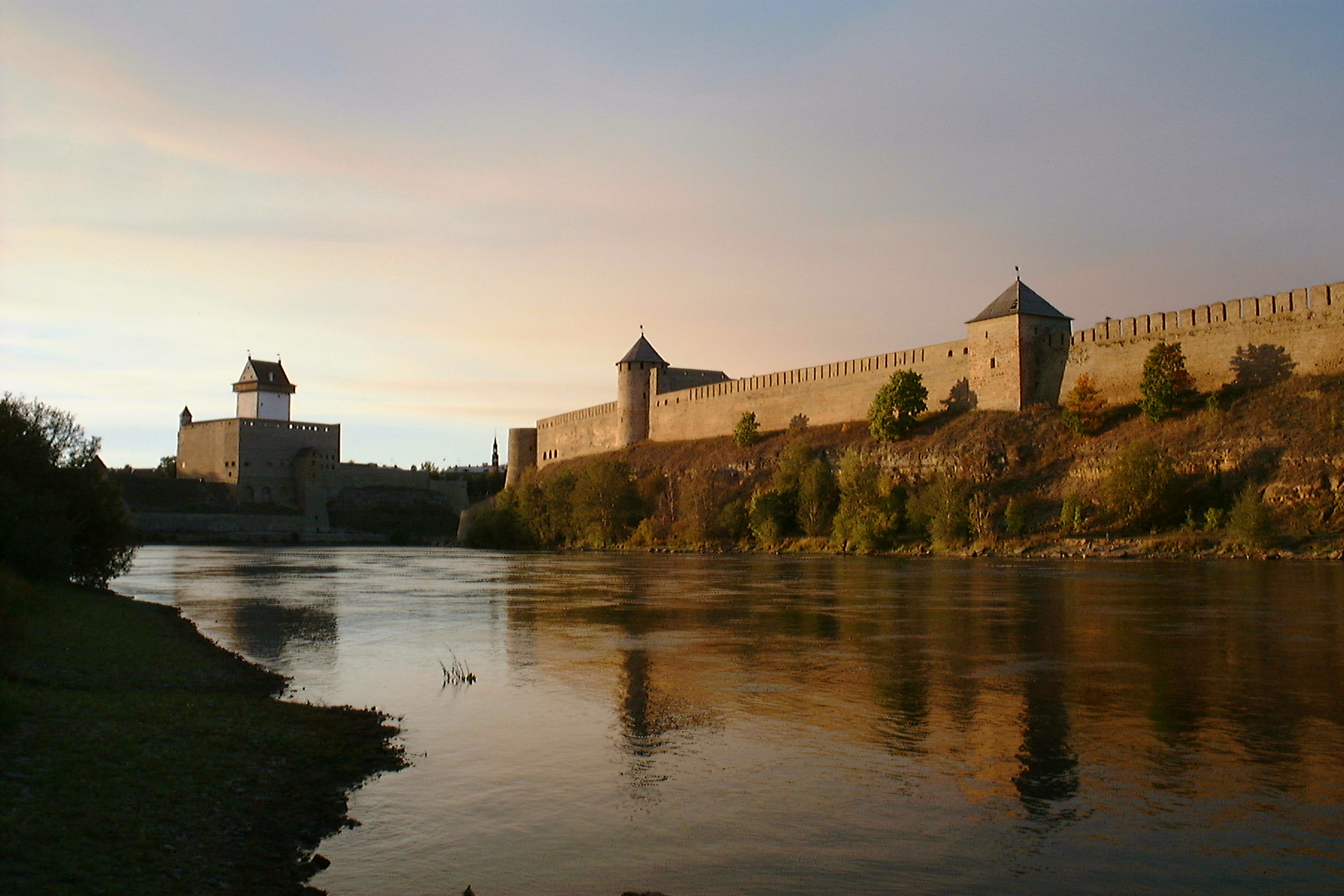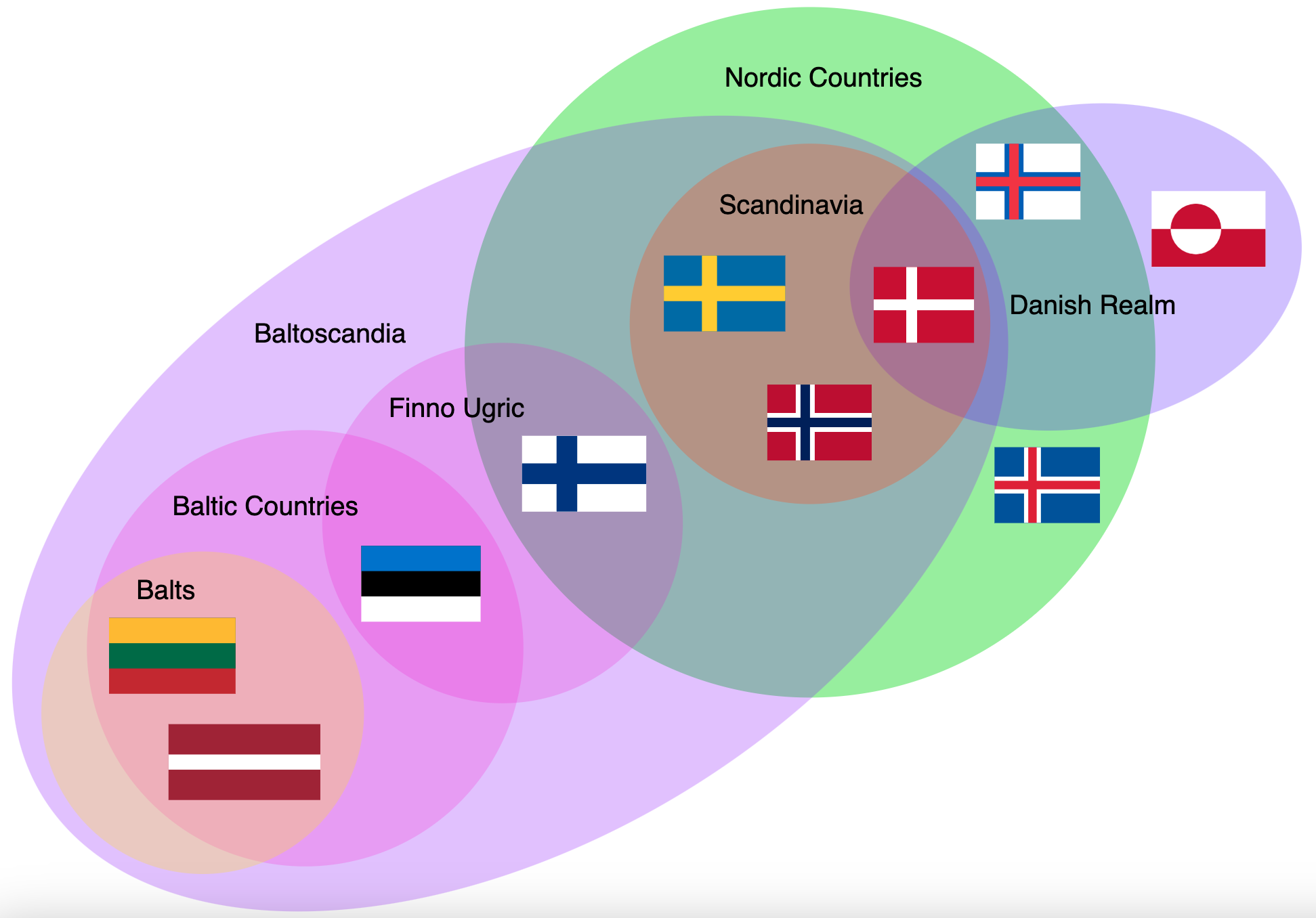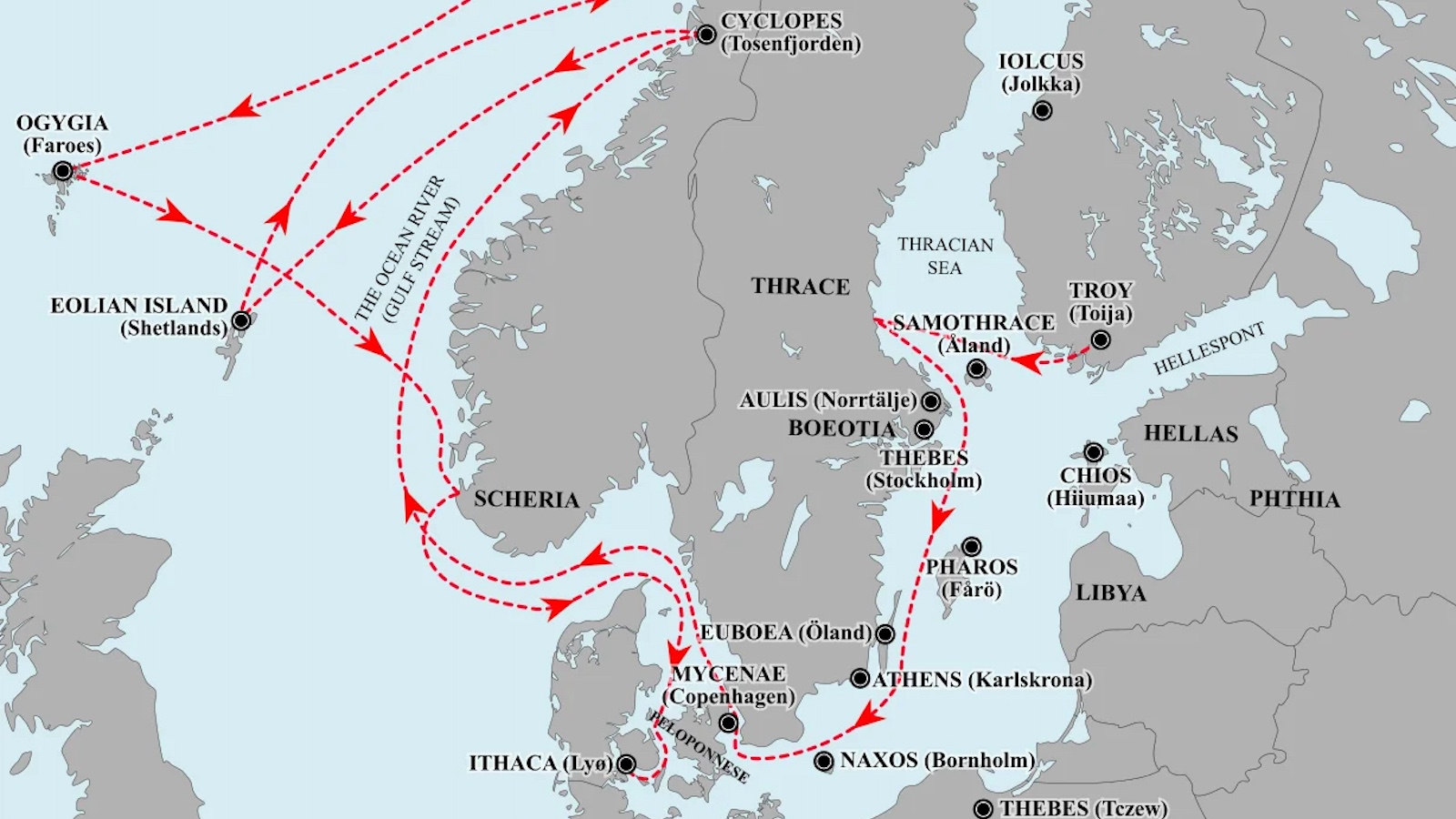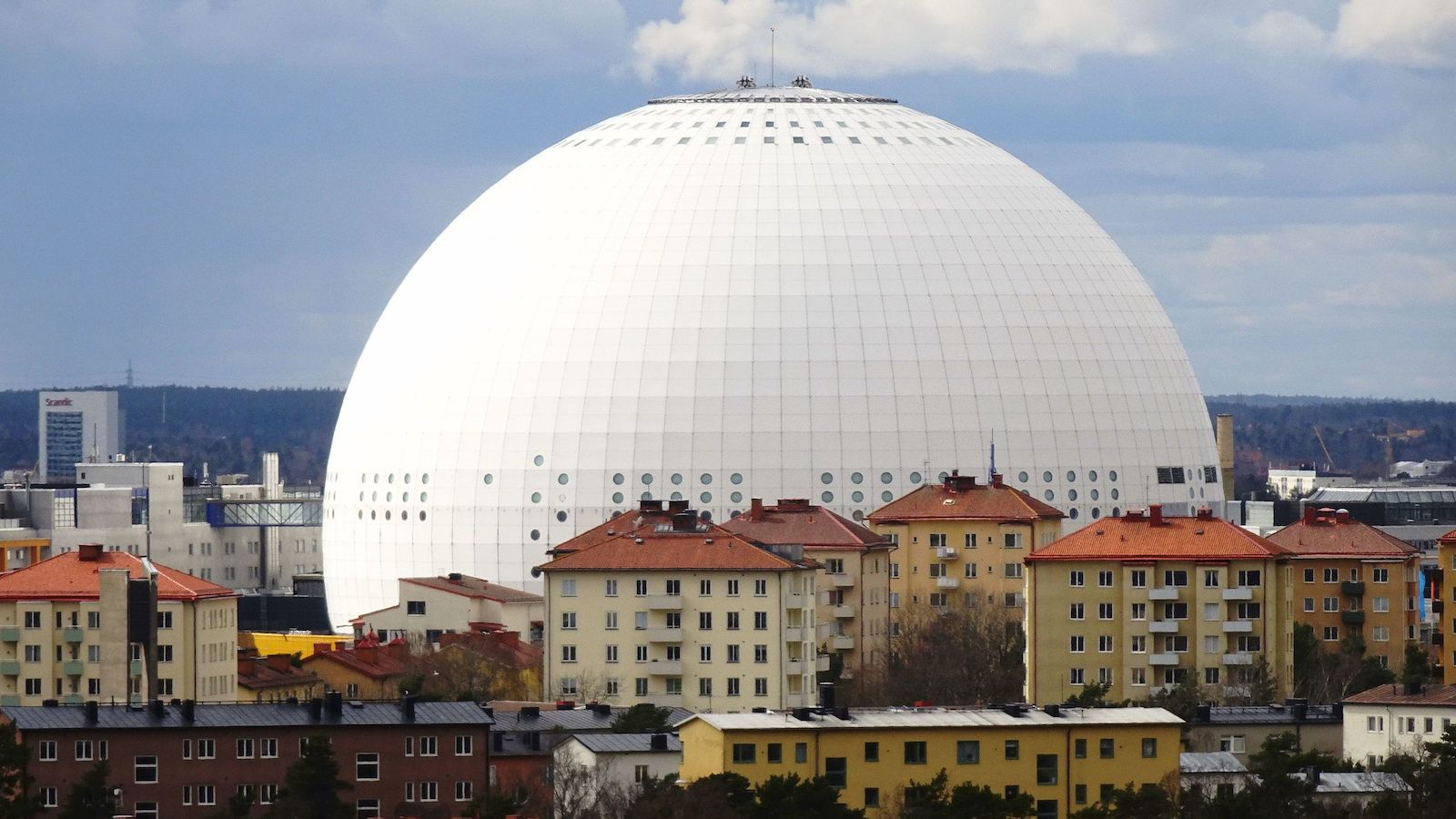Baltoscandia: The geopolitical ghost that may just have a future

- The idea of the Confederation of Baltic and Scandinavian countries was proposed nearly a century ago, yet was never realized.
- Today, the Baltic states find strength in numbers within the EU and NATO, but it doesn’t hurt to have other options.
- Lithuania revived the concept after regaining independence in 1991; its current incarnation is a regional forum called “NB8.”
You’ve probably never heard of Baltoscandia. It sounds like a made-up country, and that’s because it is a made-up country. But even without a government, a flag, and most other trappings of actual nationhood, Baltoscandia has a history, a raison d’être, and perhaps even a future.

As the name suggests, and the Euler diagram illustrates, Baltoscandia is a mashup of the three Baltic states (Lithuania, Latvia, and Estonia) with the three Scandinavian ones (Denmark, Sweden, Norway), plus Finland.
Finland is not Scandinavia
As Euler diagrams do, this one is very good at illustrating the similarities and differences between various regions — in this case, those in northern Europe.
- Although Finland is often included, Scandinavia sensu strictu consists of only Denmark, Sweden, and Norway.
- Those three speak related languages, a relationship which Finland shares with Estonia (Finno-Ugric group), and Lithuania with Latvia (Baltic group).
- Finland is part of the Nordic club, which also includes the three Scandinavian countries, plus Iceland and the Faroe Islands.
- Like the Faroe Islands, Greenland is part of the Danish Realm, but unlike that archipelago, it is not one of the Nordic countries.
But back to Baltoscandia, which on the diagram includes everyone except Greenland, the Faroe Islands, and Iceland (though many maps do include Iceland in the club).
Compared to the other established political, linguistic, or geographic categories on the diagram, Baltoscandia is a relative non-entity, which will nevertheless celebrate its nonexistence in four years.

Baltoscandia was dreamed up back in 1928 by Sten de Geer, a Swedish geography professor. He suggested that there was more to this group of countries than just geographic proximity and cultural similarity: Cooperation between them could have economic, military, and political dimensions.
Strength in numbers against imperial designs
Although the spark was Swedish, the fire it lit was mainly Baltic. Timing is an important reason for the popularity of a putative “Baltoscandian Confederation”: We’re in the Interbellum, between World Wars I and II. After centuries of foreign rule, first by Germans, then by Russians, the three Baltic states are masters in their own houses for the first time in their history.
To the newly independent Estonians, Latvians, and Lithuanians, Baltoscandia presented an opportunity to hitch their fledgling states to other small-ish countries across the sea, and to find strength in numbers. Because their powerful neighbors — now the Soviet Union, soon also Nazi Germany — still had imperial designs on their region.
Call it the curse of history, but fears are easier realized than hopes. The Confederation never came to be, and those two neighboring empires came back. In 1940, the Russians, now under the Soviet banner, reoccupied the Baltics. In 1942, the Nazis rolled in, only to be pushed out again in 1944 by the Red Army. The Soviets stayed until the USSR itself collapsed in 1991.
Would a Baltoscandian Confederation have stopped Stalin from taking a bite out of the Baltic? Who knows. It would at least have given him pause for thought: His invasion would have meant war with Sweden, Russia’s old enemy in the Baltic, which was still in possession of a mighty navy. It would also have renewed the conflict with Finland, which had proved a formidable opponent in the Winter War (1939-40).
As far as the Balts were concerned, their association with Scandinavia deserved another chance. One of the first things that happened in the newly independent Baltics was the establishment in Lithuania of an Academy of Baltoscandia (Baltoskandijas akademija), tasked with strengthening the political, historical, and cultural ties between the Baltic and Scandinavian countries.
A club so attractive that even Scotland wanted in
One reason why the idea of associating with Scandinavia proved so persistent is the attractiveness of Scandinavia itself. Although the picture on the ground is more nuanced, the three countries (and by extension all Nordics) are perceived by the rest of the world as model societies that have managed to combine high levels of wealth and welfare, and that consistently achieve high scores on the annual World Happiness Index, as well as other indicators of personal well-being and high social achievement.
In 2012, when Scottish secession from the United Kingdom still seemed on the ascendant, there was talk that an independent Scotland could reinvent itself as the newest member of the Scandinavian/Nordic family of nations (see Strange Maps #552).

That seems even less likely today than it did then. Similarly, the animus for Baltoscandia has died down. The Academy died a quiet death, and the accession of the three Baltic states into the European Union and NATO in 2004 has provided them with strength and safety in even greater numbers.
Yet something of the idea lingers. In a 2008 survey, 41% of Lithuanians said they’d prefer their country to be identified as Northern European, while only 22% saw Lithuania as an Eastern European country.
And then there is the Nordic-Baltic Eight (NB8 for short), a regional cooperation forum between the countries of Baltoscandia (definitely with Iceland this time), with regular meetings between prime ministers and other government officials.
“No” to borderization in the Baltics
The NB8 have a combined population of 33 million and a combined GDP of close to $2 trillion. If they were an actual country, it would have Europe’s fifth-largest economy and its 10th-largest population.
So, Baltoscandia lives, albeit under a pseudonym, doing worthy but boring intergovernmental work, and overshadowed by larger and more useful associations such as the EU and NATO.
Yet the Baltic states will hang on to NB8, and not just because it gives them direct access to Northern Europe, with all the institutional best practices and reputational advantages that entails.
For the other reason, we need to go back no further than mid-May 2024, when Russian officials lifted 25 Estonian buoys out of the Narva River, which forms the border between both countries. It’s an incident strongly reminiscent of the practice of “borderization” in South Ossetia, a region of Georgia occupied by Russia. Whenever the Georgians aren’t watching, Russian troops physically move the post marking the frontline, annexing more territory a few square meters at a time.
If Russia isn’t yet as bold in the Baltics, that’s probably more because of NATO’s Article 5, which says that an attack on one member state is an attack on all. But if Russia ever calls NATO’s bluff, it’s never a bad idea for the Baltics to have the contacts for the Swedish navy and the Finnish army at their fingertips. Just click on the folder marked “Baltoscandia.”
Strange Maps #1244
Got a strange map? Let me know at [email protected].
Follow Strange Maps on X and Facebook.





